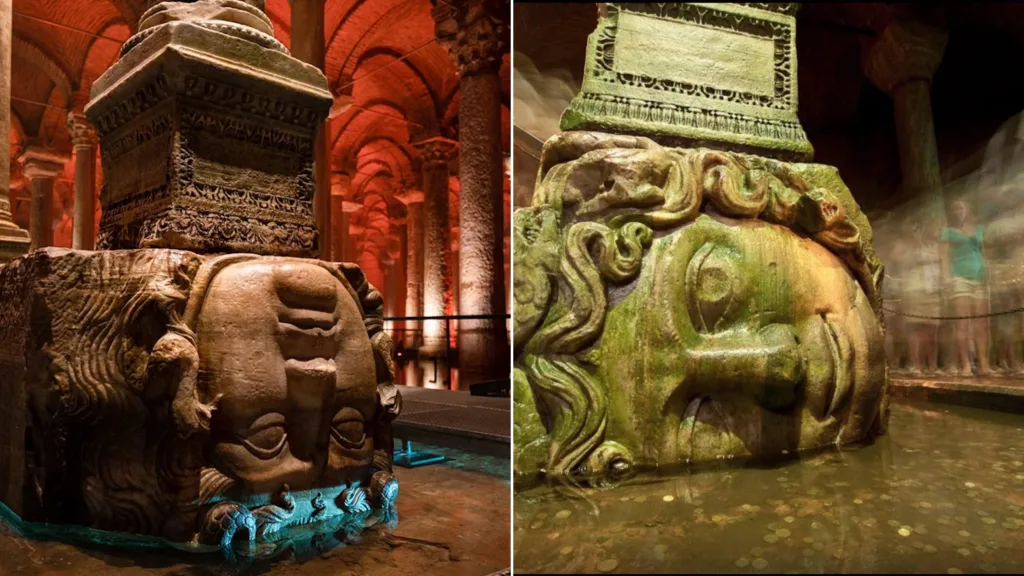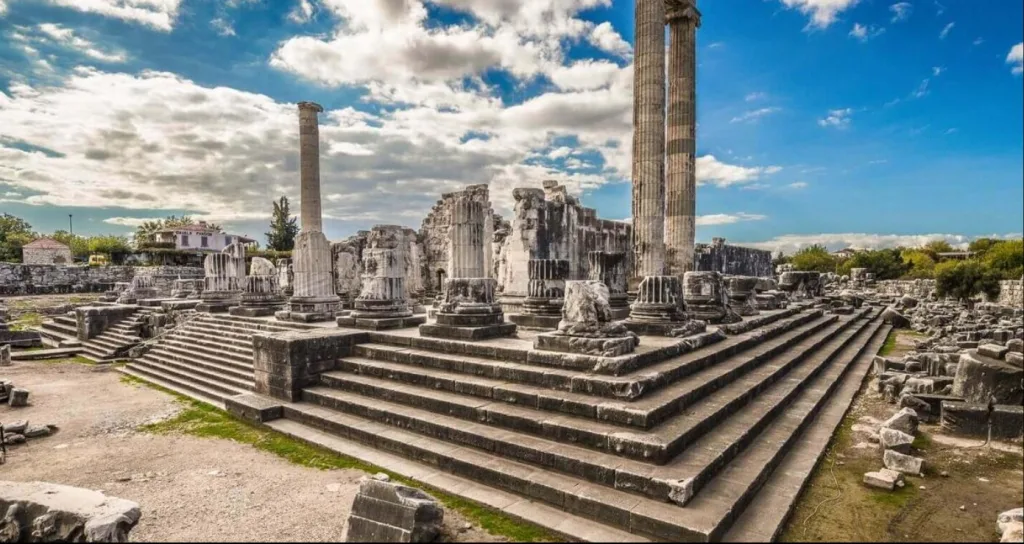According to Greek mythology, Medusa, one of the three female monsters known as the Gorgons, is the only mortal among them. Medusa and her sisters, Euryale and Stheno, have live snakes instead of hair and possess the terrifying power to turn anyone who gazes into their eyes to stone. There are several different versions of Medusa’s story found in mythology.

Medusa sculptures in Basilica Cistern
The Story of the Gorgon Sisters
In Greek mythology, the Gorgons are fierce female monsters with sharp teeth and living snakes instead of hair. Legend says that anyone who meets their gaze will be turned to stone. The three sisters are Medusa, Euryale, and Stheno. Medusa, specifically, is known as the mortal Gorgon and has the deadly power to petrify anyone who looks at her.
Interestingly, Medusa was once a beautiful young woman. Her beauty attracted the jealousy of goddesses and the admiration of gods. Athena, the daughter most loved by Zeus, was especially envious of her. Poseidon, god of the seas, was captivated by Medusa’s beauty. Overcome with desire, he assaulted her in Athena’s temple. Feeling humiliated by this desecration of her sacred space, Athena punished Medusa by transforming her into a Gorgon. From then on, Medusa became a monstrous creature with snake hair, and anyone who looked at her face was instantly turned to stone.
The Haunting Life of Medusa
Cursed by Athena, Medusa’s once-beautiful hair became writhing snakes, and her gaze turned deadly. Being mortal, Medusa was doomed to live as a Gorgon. Athena, unwilling to let her punishment end naturally, collaborated with Perseus, who ultimately beheaded Medusa.
The Birth of Pegasus and Chrysaor
When Perseus severed Medusa’s head, her children by Poseidon – the winged horse Pegasus and the giant Chrysaor – sprang from her body. Drops of her blood fell onto the Libyan deserts, where they transformed into venomous snakes. One of these serpents would later kill Mopsus. Perseus took Medusa’s severed head, while Athena flayed her skin to adorn the Aegis shield. Athena also gifted two drops of Medusa’s blood to King Erichthonius; one drop was a deadly poison, the other a universal cure.

Perseus with the Head of Medusa (Sebastiano Ricci)
Medusa’s Head as a Protective Symbol
When visiting ancient buildings and sacred places, it is no coincidence to find depictions or reliefs of Medusa. People believed in the protective power of her image and used it to safeguard important locations from evil. In the Byzantine era, Medusa’s head appeared inverted or sideways on sword hilts and column bases, believed to ward off harm.
Where to See Medusa Today
Today, Medusa’s image can still be seen at the Temple of Apollo in Didyma, Aydın and Basilica Cistern (Yerebatan Sarnıcı) in Istanbul. In Didyma, although the Temple of Apollo was never completed, several unfinished Medusa sculptures have survived and are on display in the temple’s courtyard.

Apollo Temple of Didyma
At the Basilica Cistern in Istanbul, two Medusa heads serve as column bases in the northwest corner of the cistern. These heads, believed to date from the 4th century, were likely repurposed from a Roman-era structure, used here purely as functional column supports. One head is positioned upside down and the other sideways, which researchers believe was done either for practical construction reasons or perhaps to nullify Medusa’s power.

